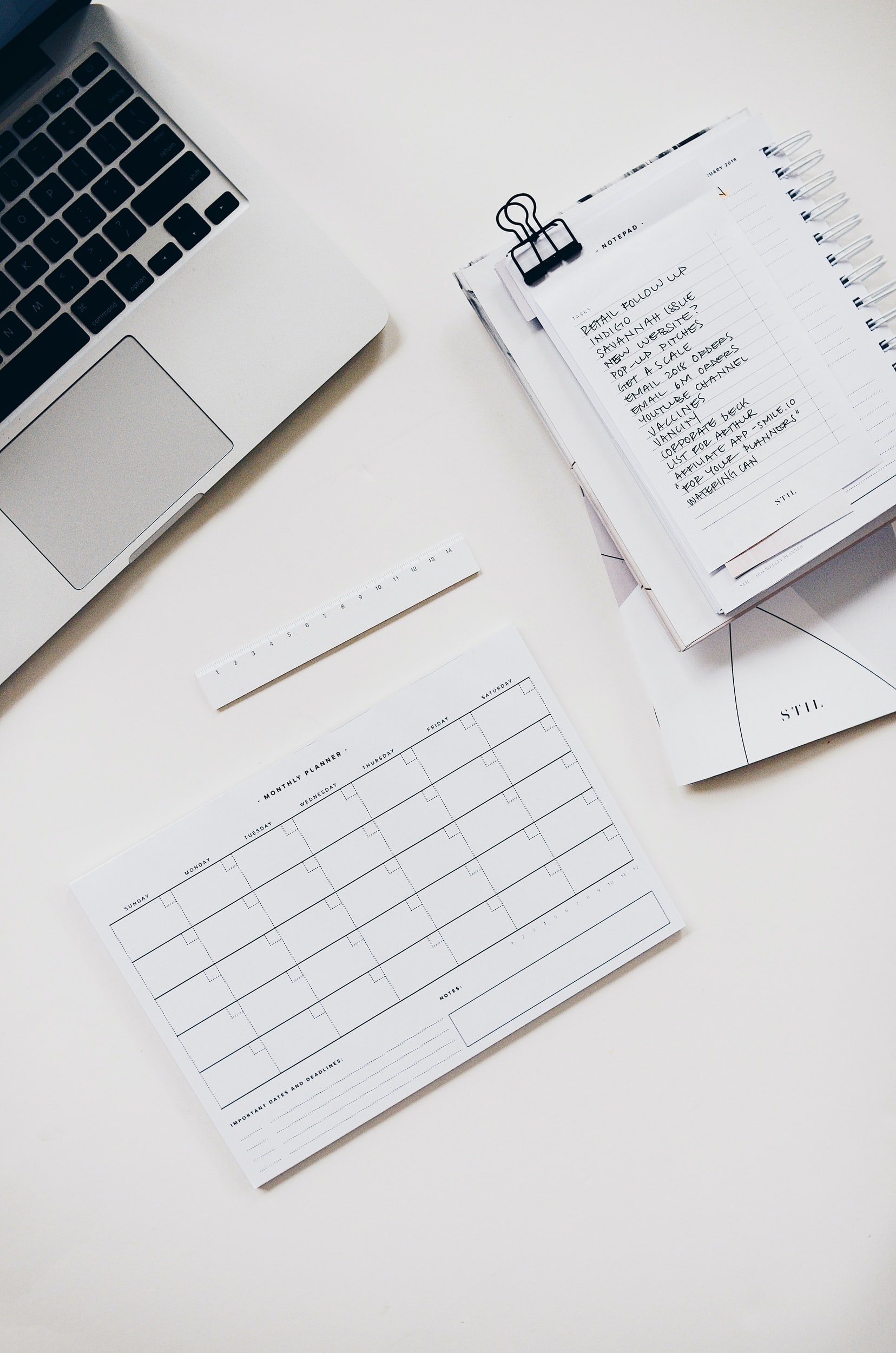A Guide To: Mindfulness
When broken down, mindfulness is one of our most basic human abilities. To be mindful is to reawaken oneself to be present in the very moment. It involves bringing yourself fully aware of what you’re experiencing in the here and now - who we are, where we are, and what we are doing, without judging a specific situation as ‘good’ or ‘bad’.
Here’s what we cover in this guide:
The Purpose of Mindfulness
Meditation
4 Simple Ways to Practice Mindfulness
4 Structured Ways to Practice Mindfulness
The Basics of Practicing Mindfulness
Everyday Mindfulness Practices
Being mindful therefore helps us to not overreact to present circumstances, events, or people that would otherwise overwhelm us with stress or other negative emotions.
As you observe your thoughts and emotions, you learn to recognize the turbulent waves that affect your state of mind, but you don't let them control your words, actions, or decisions.
We all have the natural ability to possess this trait. With practice, its power becomes more readily available to us.
By practicing mindfulness, you are essentially reworking and reconstructing the physical and detailed structure of your brain. This process creates new neural pathways that can assist you in becoming the person you desire to be.
This state of active, open attention on the present moment can be achieved by incorporating breathing methods, guided imagery, and a variety of other practices into your routine to relax both the body and mind.
Rather than dwelling on things from the past or worrying about the future, being mindful involves objectively observing and labelling thoughts, feelings, and sensations.
Rooted deep within ancient Buddhist and Hindu teachings, mindfulness plays a significant role in the journey towards enlightenment. Over the last decade, the concept of mindfulness has transitioned into mainstream medicine and science, spreading around the world like wildfire. In today’s modern-day society, it is widely embraced across many cultures, religions, and demographics, helping humans be the best versions of themselves.
What is the Purpose of Mindfulness?
To wake up and become aware of the inner workings of our emotional, mental, and physical processes, even despite demanding distractions. The aim is to observe but with the absence of self-judgement.
The main objective of practising mindfulness is to gain a perspective on one’s inner world, bringing more peace mentally. It can be used to reduce pain, anxiety, stress, and insomnia and simply become more relaxed.
What is Meditation?
Meditation involves venturing deep within the workings of our minds. This includes observing our sensations, emotions, and thoughts without judgement. Meditation effectively reduces stress, anxiety, pain, depression, insomnia, and high blood pressure.
Apart from the myriad of significant physical benefits, meditation can further help you in balancing out your thoughts and emotions, as well as improve attention, productivity, sleep, creativity, and diabetes control, and decrease that feeling of being burned out.
What Are Some Simple Ways to Practice Mindfulness?
Incorporating mindfulness techniques into your daily routine can be done in numerous ways. Check out these examples:
Concentrate on the very moment.
In such a fast-paced society, it can be difficult to pull away from the constant influx of distractions, and actually yourself slow down.
Take your time, even whilst you’re performing the most tedious of to-do’s, and absorb what’s happening in the outside world with all of your senses.
Think about sound, sight, smell, taste, and touch, and focus on pouring your attention into each, minute experience.
Shift your attention.
Put intention behind focusing on the here and now. Accept each moment, event, and circumstance, and refrain from judging yourself and others.
Accept yourself for who you are.
Self-love, baby! How can you approach life mindfully if you can’t even appreciate yourself? Aim to treat yourself as you would treat your closest friends. Be mindful of how you talk about yourself, and don’t skimp out on making time to indulge in self-care.
Draw your attention to each breath.
If you find yourself experiencing negative thoughts, take a step back and focus on breathing in and out. If possible, try to sit down or source out an area that’s free or limited in distractions. Close your eyes, and concentrate on the oxygen flowing inwards and outwards. I generally aim to breathe in for four counts, hold it for four counts, and then breathe out for another four counts. Imagine yourself drawing a box with each breath you inhale and exhale.
Other helpful forms of structured mindfulness techniques:
Sitting meditation
Probably one of the most common forms of meditation, is to start by sitting on the floor comfortably.
Maintain a straight back, place your hands in your lap, and either cross your legs or lay them flat on the floor.
Breathe in and out through your nose, concentrating on each breath flowing in and out of your body.
For different variations of Sitting Meditation, have a look at this link.
Body scan meditation
One of my personal favourites for when you’ve had one of those extra challenging days…
Lie down, flat on your back with your legs fully extended and your arms by your sides.
Open your palms to face up towards the ceiling, and elongate the neck.
Start by pouring your attention into each, individual region of the body, starting from your toes, and eventually moving up to your head.
Focus on each breath, sending oxygen out to each muscle as you actively try to picture it in your mind.
Draw your attention to any sensations, emotions, and/or thoughts that reveal themselves as you scan each part of your body.
For more of a Beginner’s Guide to Body Scan Meditation, check out this link here.
Walking meditation
This form of meditation is exactly how it sounds. The aim is to focus on the actual experience of walking, whilst maintaining awareness of your sensations.
For more information on Walking Meditation, suss out this link.
Gratitude Meditation
As the name suggests, gratitude meditation focuses on expressing gratitude, and it’s been a practice for centuries amongst Buddhists and Native Americans, as well as many other cultures and religions. Much of our time is spent chasing the things we don’t have, but practising gratitude reverses our priorities and helps us appreciate what we have.
Gratitude meditation can be practised in many different settings. It can even be done while performing daily tasks, like brushing teeth or washing dishes. It’s a simple way to meditate because all you need to buckle down and focus on are the experiences, people and things you are grateful for.
Check out this blog here for more information on Gratitude Meditation and my personal experiences.
When and how often should I practice mindfulness exercises?
The beauty of mindfulness is that it can be practised anywhere, at almost any time. Other structured forms of mindfulness exercises (i.e. body scan meditation, sitting meditation) require time and space free from distractions.
Mindfulness is most effective when practised consistently and over a long period. Experts recommend repeating mindfulness exercises at least every day for around six months.
The Basics of Practicing Mindfulness
Mindfulness assists in overcoming our conditioned, habitual responses. Here’s some fundamentals you can try throughout your day:
Dedicate yourself & your time.
You don’t require any sort of fancy-ass yoga mat, or high-quality meditation cushion. There’s really no excuses. The fundamental essentials are time and space, so be sure to set them aside.
Accept the present moment for what it is.
The main objective of mindfulness is not to silence the mind. In fact, the aim is to place your full, undivided attention on the present moment, refraining from judging what comes into your awareness as either good or bad.
Allow your judgements to come and go.
Inevitably, judgemental thoughts will arise every now and then. Refrain from judging yourself for whatever pops up.
The trick is to notice and accept but not attach to them. Instead, observe them, and let them go.
Return to watching the present moment as it is.
Our minds so frequently and fanatically get swept up in waves of thought. And while it’s easy to get carried away in a fantasy land far, far away, this is where mindfulness shines true. It takes practice to return to the present moment, but it gets a lot easier with time and consistency.
Mindful Practices for Every Day
Over time, the more mindfulness you incorporate into your everyday life, the more balanced, calmer, and patient you become.
Mindfulness essentially shifts how you perceive day-to-day experiences, further generating positive change throughout other areas in your life.
Personally, this practice has played a significant role in my own life, in terms of physical and mental health.
By implementing mindfulness, I’ve noticed a plethora of differences in how I feel, think, react, and how I approach challenging situations.
The perspective I have gained overall honestly has changed my life’s direction, and I couldn’t recommend this anymore.
Start small; you’ll see how much easier it’ll flow to you over time. What are you waiting for? Get up, get going, and start your mindfulness journey today.
















When travel comes into play, our fitness routines tend to get chucked out the window. And who could you blame when the labyrinth-like alleyways, soaring mountain tops, and that cocktail on the beach feel like they’re quite literally calling out your name… But alas, staying in shape while travelling can be reframed from energy-draining, to effortless with these simple exercises. Fellow female travellers, behold: the 5 Best Workouts for Girls on the Go.